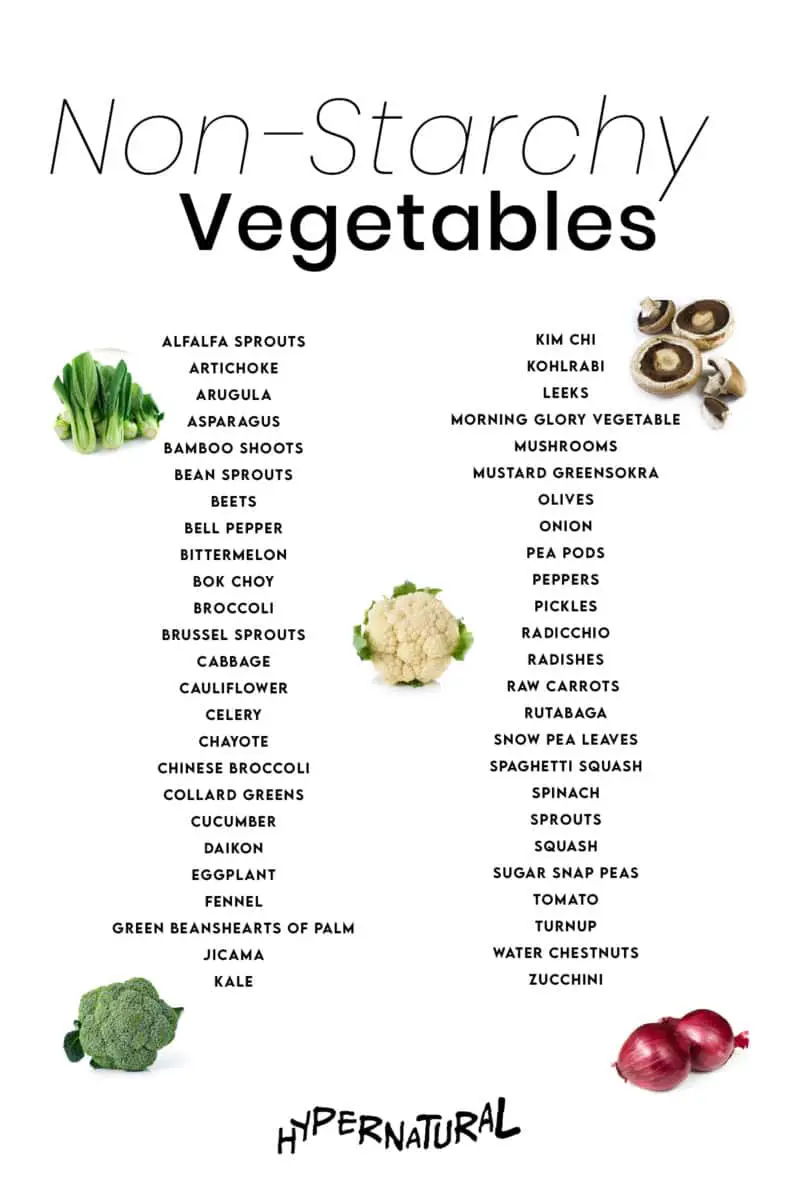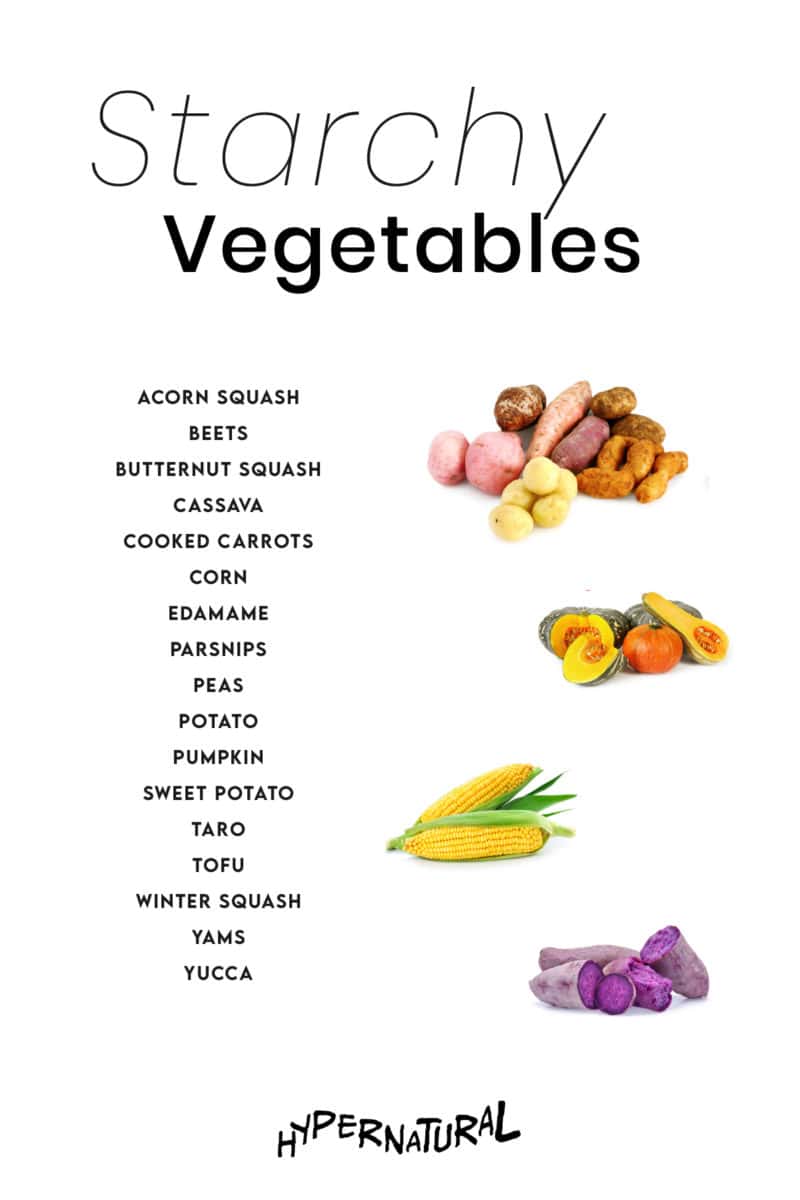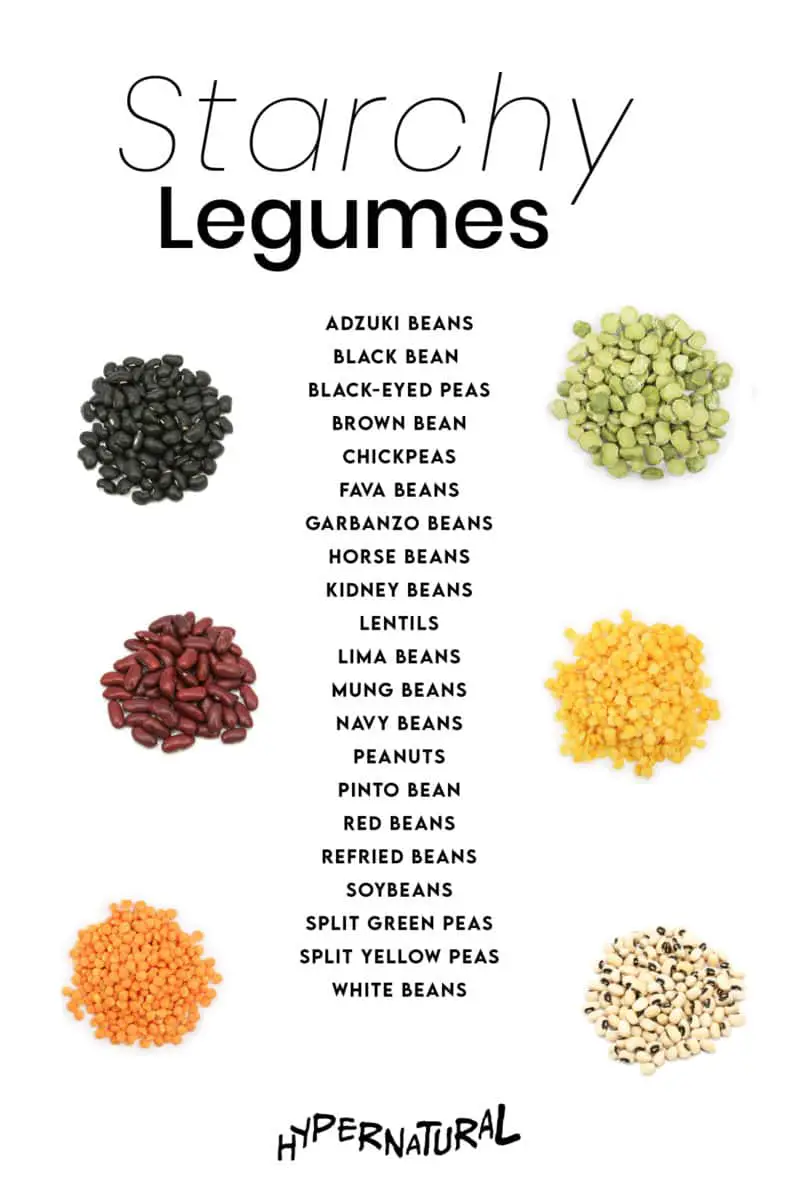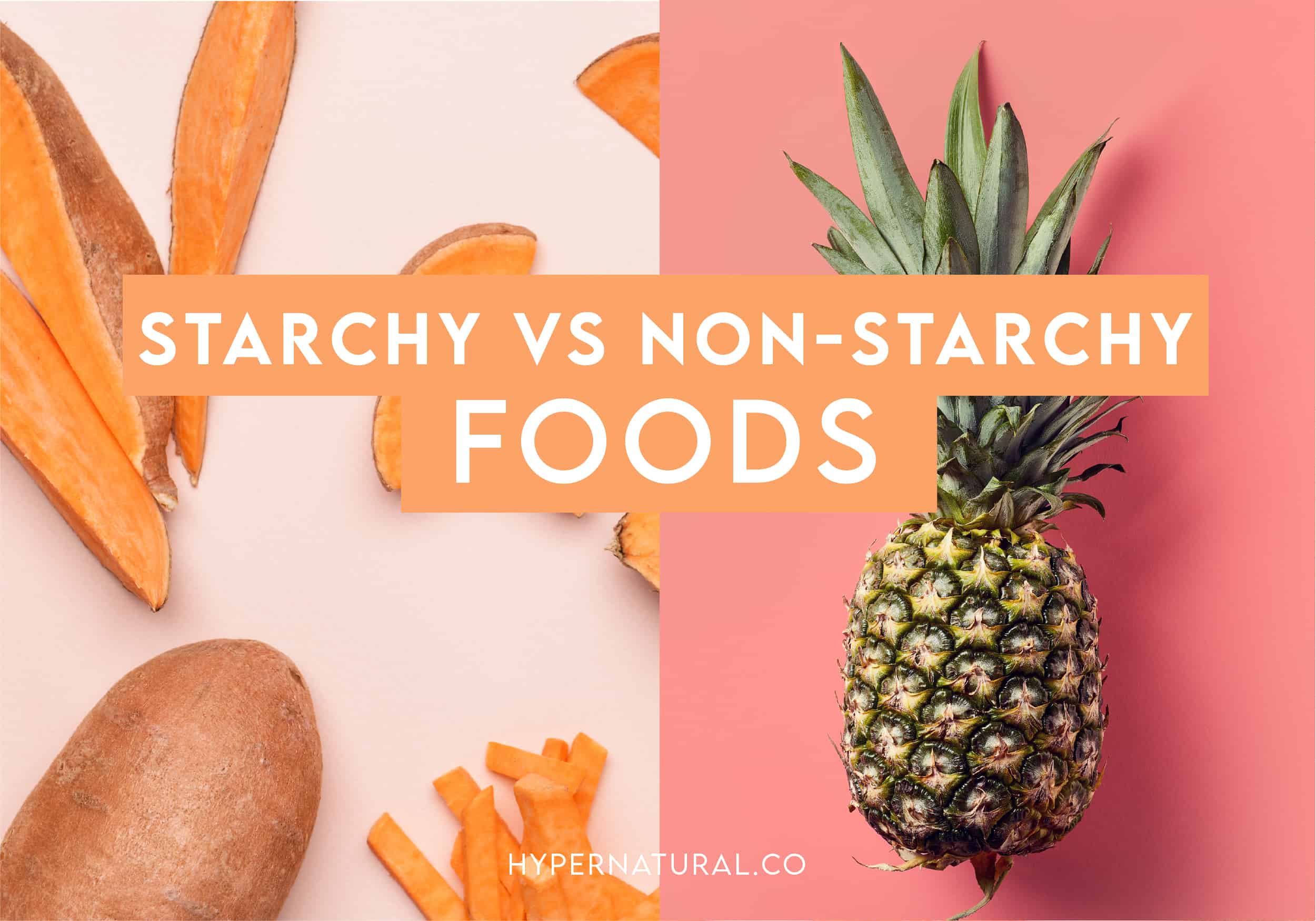Are you looking for a complete list of starchy and non-starchy foods? Well, you’ve come to the right place!
What naturally comes to mind when you think of “starch”?
My mind goes to potato flour, pressed shiny denim, bad, heavy, fattening, weighs you down, loaded baked potato, unhealthy, stay away.
Have you attached similar meanings to starch?
Like fat, starchy foods have played the villain in our culture. There’s a misconception that starchy vegetables make you gain weight. Potatoes, the most demonized starchy vegetable, are bad for you.
But this couldn’t be further from the truth.
In reality, it’s our habits that make up our lifestyle that cause weight gain. It’s not the poor potato or the pasta living its life waiting to get eaten. It’s us—the humans.
This article intends not to shame your eating habits or blame the wellness industry or diet culture (okay, maybe diet culture a little) but to destigmatize starchy foods and empower you.
There is a quote in the Functional Nutrition world:
“Your genes load the gun, but your lifestyle pulls the trigger.”
And an idea in the Intuitive Eating world:
“No food is good or bad.”
I’m of the camp that everyone’s needs are different, and there is no one-size-fits-all approach to health. Limiting or adding starchy foods to your diet might benefit you depending on your lifestyle concerns, health background, and health goals.
But before we get into it, let’s start with a clean plate, drop every misconception we’ve attached to starch, and dive into the basics.

First, what are starches vs. carbs?
Our bodies need three primary sources of macronutrients to function: proteins, carbohydrates, and fats.
There are three kinds of carbohydrates: sugar, fiber, and starch.
Molecularly, there are two types of carbohydrates: simple carbohydrates and complex carbohydrates.
It takes the body less energy to break down simple carbs. In other words, simple carbs digest more quickly and, in turn, spike your blood sugar levels faster. Simple carbs include white bread, sugar, candy, and white rice.
Fibers and starches fall under the complex carb category. It takes your body more energy to digest complex carbs (a.k.a slower digesting carbs), keeping your blood sugar levels steady and you satiated. Examples of complex carbs are grains, beans, legumes, and vegetables.
For example, white bread vs. whole grain bread: white and whole grain bread will have the same carbs and calories, but their molecular structure will differ. Whole grain bread is more nutrient-dense and consists of complex carbs. Whole grain bread is slower digesting and keeps you satiated longer.
Basically, starches are carbohydrates, but carbohydrates are not always starches.
Also, remember that most foods will contain a combination of both simple and complex carbs.
You Might Also Like: Printable List of Anti-inflammatory Foods and Inflammatory Foods to Avoid
So why does everyone talk about blood sugar levels?
Carbohydrates cause blood sugar to rise. Many studies have shown that consuming a low-carb diet can help prevent blood sugar spikes.
Lowering your carb intake is beneficial if you have a metabolic disorder such as diabetes. Here is an excellent article if you want to learn more about diabetes.
While no food is either good or bad, portions do matter, and ideally, choosing foods that are more nutrient-dense loaded with micronutrients, vitamins, and minerals will balance your diet.
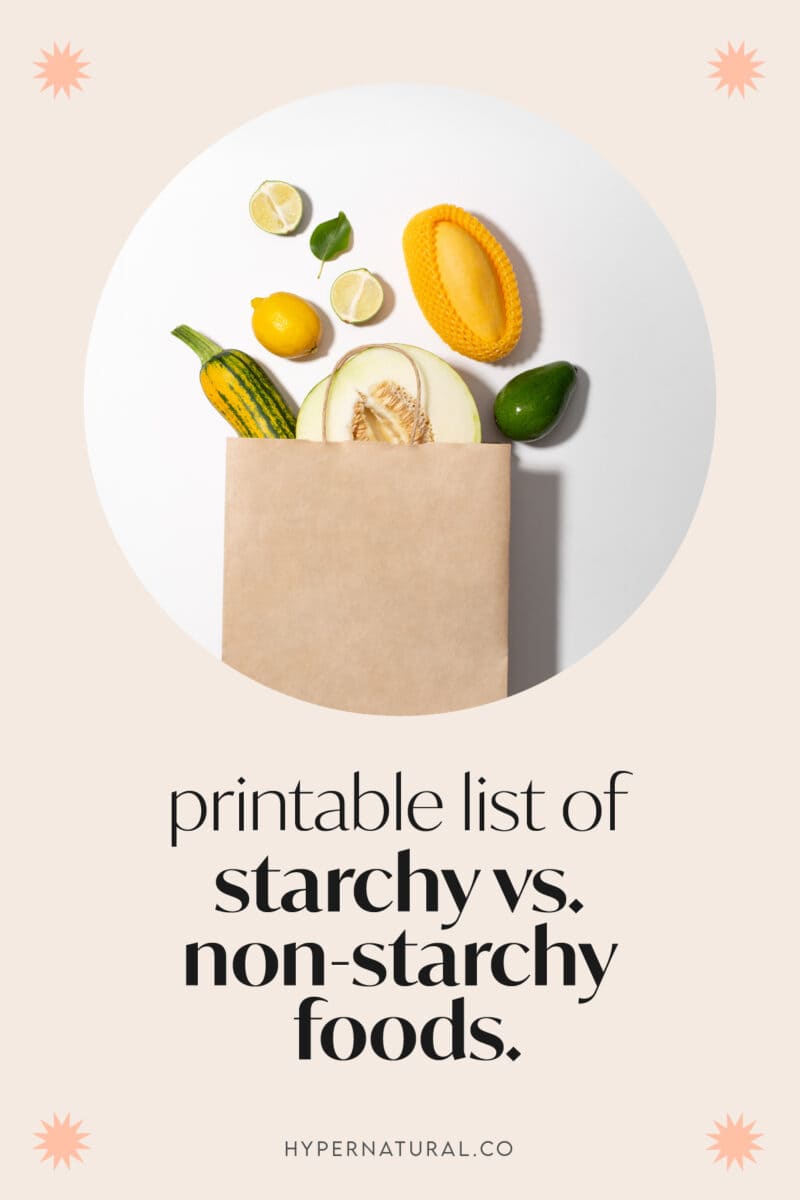
So, what does Glycemic Index have to do with all of this?
The Glycemic Index is a tool (great for diabetics) to measure carbohydrates in the food we eat. Researchers assign a GI value to different foods. The higher the index (the number), the faster your blood sugar spikes, leaving you hungry sooner. You can find the GI value for a particular food on The Glycemic Index database.
Ideally, choose nutrient-dense foods that will keep your blood sugar stable and full longer. But remember, there are no good or bad foods.
A question that gets asked a lot is…
Can I eat starchy foods if I’m trying to lose weight?
Yes, of course!
When you do away with one food group, you throw away all of the micronutrients, vitamins, and minerals that a food source contains.
To lose weight, sustain it long-term, never look back, and eat things you enjoy. Unless, of course, your health background calls for a specified diet.
Opt for a varied diet. Pay attention to how particular foods make you feel. Change up ingredients during the week for a more fun and balanced approach to eating. And strive for more nutrient-dense food, lasting hunger, and enjoyment.
7 Amazing Benefits of Starchy Foods:
It’s essential to include starchy foods for an overall balanced diet.
- Increased satiety
- Loaded with vitamins, minerals, and nutrients
- It helps you maintain weight
- Provides energy
- Contains fiber
- Great for brain health
- Emotionally satisfying
You Might Also Like: Printable List of Anti-inflammatory Foods (chart) and Inflammatory Foods to Avoid
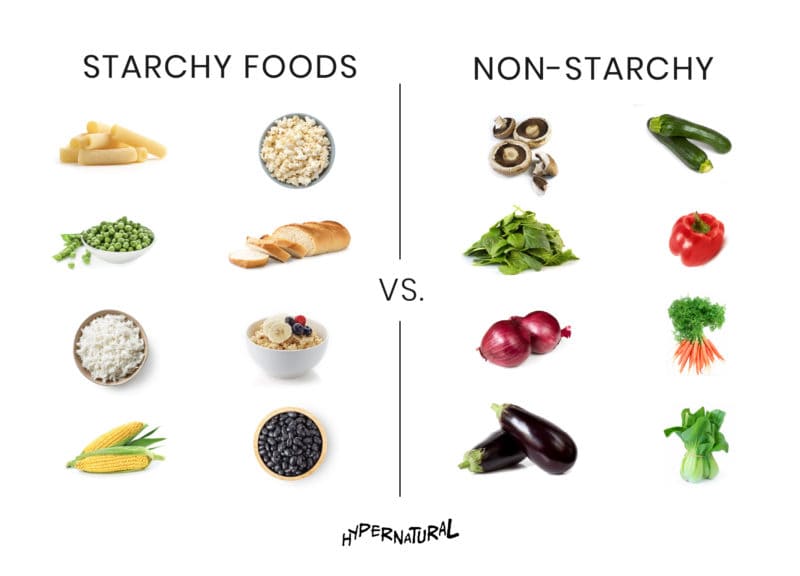
A Complete List of Starchy and Non-Starchy Vegetables, Grains, and Fruits
List of Non-Starchy Vegetables
- Alfalfa Sprouts
- Artichoke
- Arugula
- Asparagus
- Bamboo Shoots
- Bean Sprouts
- Beets
- Bell Pepper
- Bittermelon
- Bok Choy
- Broccoli
- Brussel Sprouts
- Cabbage
- Cauliflower
- Celery
- Chayote
- Chinese Broccoli
- Collard Greens
- Cucumber
- Daikon
- Eggplant
- Fennel
- Green Beans
- Hearts Of Palm
- Jicama
- Kale
- Kim Chi
- Kohlrabi
- Leeks
- Morning Glory Vegetable
- Mushrooms
- Mustard Greens
- Okra
- Olives
- Onion
- Pea Pods
- Peppers
- Pickles
- Radicchio
- Radishes
- Raw Carrots
- Rutabaga
- Snow Pea Leaves
- Spaghetti Squash
- Spinach
- Sprouts
- Squash
- Sugar Snap Peas
- Tomato
- Turnup
- Water Chestnuts
- Zucchini
List of Starchy Vegetables
- Acorn Squash
- Beets
- Butternut Squash
- Cassava
- Cooked Carrots
- Corn
- Edamame
- Parsnips
- Peas
- Potato
- Pumpkin
- Sweet Potato
- Taro
- Tofu
- Winter Squash
- Yams
- Yucca
List of Starchy Legumes & Beans
- Adzuki Beans
- Black Bean
- Black-Eyed Peas
- Brown Beans
- Chickpeas
- Fava Beans
- Garbanzo Beans
- Horse Beans
- Kidney Beans
- Lentils
- Lima Beans
- Mung Beans
- Navy Beans
- Peanuts
- Pinto Bean
- Red Beans
- Refried Beans
- Soybeans
- Split Green Peas
- Split Yellow Peas
- White Beans
Starchy Fruits
- Banana
- Plantain
- Dates
List of Non-Starchy Fruits
- Melon
- Stone fruit
- Berries
- Apples
- Pears
List of Starchy Grains
- Bagels
- Barley
- Bread
- Bulgar
- Farro
- Flour
- Oatmeal
- Pasta
- Quinoa
- Rice
List of Starchy Snacks
- Popcorn
- Chips
- Crackers
You Might Also Like: Printable List of Anti-inflammatory Foods (chart) and Inflammatory Foods to Avoid
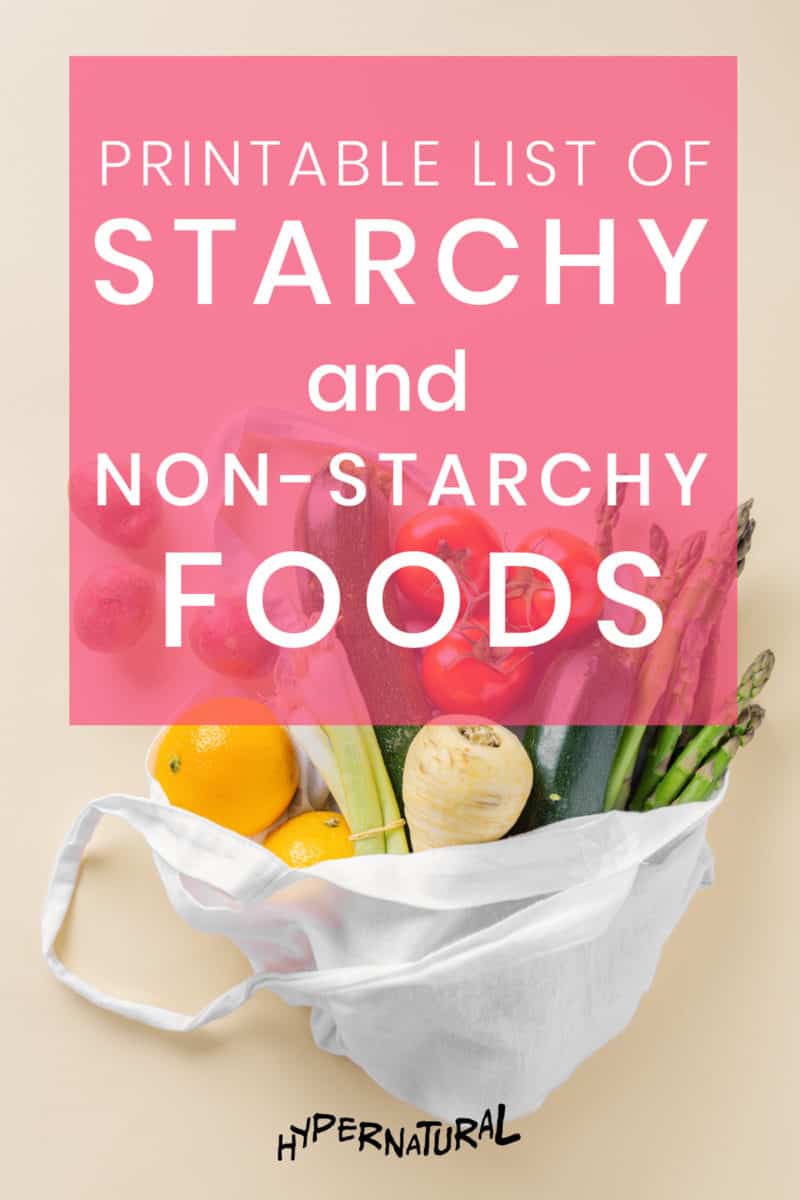
Closing Thoughts:
If you’ve gotten anything from this article, I hope you got that food is neither good nor bad. And there’s a place for starchy foods in your life.
Now that you understand the difference between starchy and non-starchy foods, you can go off into the world and make informed food choices that align with your holistic health journey and eating happiness.

